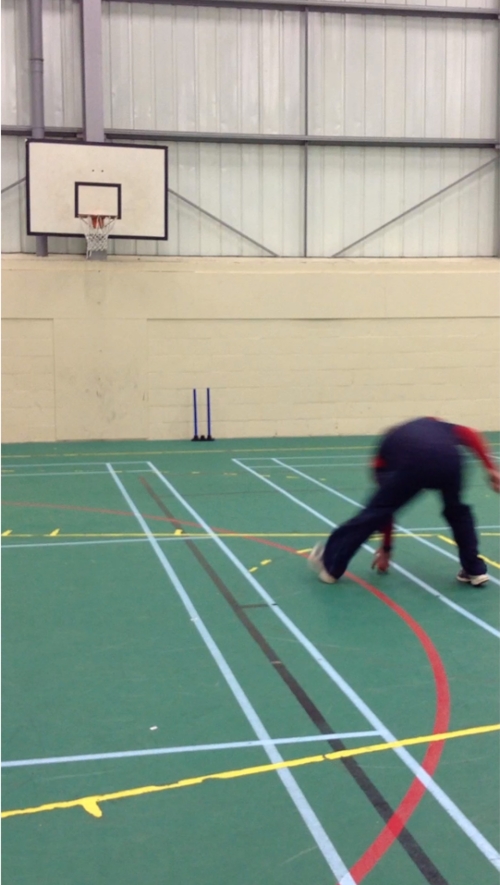Get More Run Outs With This "Non-Throwing Side" Technique

Most run outs in club cricket come from balls hit to fielders on their throwing arm side, but how good are you at completing run outs when the ball goes to your non-throwing side?
There are two methods to hitting the stumps when the ball goes to your non-throwing hand side. In this article we are going to look at the one that fits the ball being dropped for a single slightly infront of the fielder.
Speed is the key
Early decision making helps the fielder to move out of their ready position and towards the ball. Players who anticipate well often watch the batter intently to pick up cues about the direction of the shot, weight of shot (often indicated by the swing of the bat) and the intention to take off for a quick single.
Many top quality fielders train their anticipation in net sessions by watching and simulating moving to the ball when it has been hit, it's great to practice at point, mid wicket and square leg.
1. One handed pick up
Ball is picked up just inside the front foot with the non-throwing hand.

2. Ball Transfer/Rotate Phase
Ball is transferred into the throwing hand, this allows the fielder to get an early look at the target. Momentum takes the fielder into a slight rotation with the back foot moving behind the body readying itself to push back into the line of the stumps in the next phase.

3. Strong back leg = stability and power
The back leg acts as a brake in this phase and by slowing the lateral movement allows the fielder to work back into the stumps, aligning the shoulders with the stumps and providing stability to create power in the throw.

4. Point - Aim - Fire
Point the front arm to align the shoulders toward your target, pick your spot with your eyes and dynamic balance is achieved. Despite still moving, the fielder is stable and aligned perfectly.

5. High release position: elbow at 90 degrees
The high release does 2 things:
- Vertical rotations are fantastic for accuracy. The ball will stay on the right line for the longest path towards the stumps
- Healthy: The shoulder and elbow are happiest when they are aligned in this fashion.

6. Success - On your way Son!

Practice hard and you will soon see your run out count going through the roof!
- Login to post comments


Comments
This is the kind of stuff where looking at what baseballers do is really instructive, because its a skill they're faced with all the time. When I coached 2nd basemen to go into the hole and start the double play, the two methods we would discuss would be the reverse hip pivot and sidearm, or the 360 jump turn. Which one is more appropriate would depend upon whether they were able to intercept the ball in front of them or to the side of them - and also, of course, which ones they had better perfected in training.
I wonder how many professional cricketers can do an opposite hand pick up, 360 jump turn and hit the stumps from 30 yards? Probably zero, because they've never been taught it.